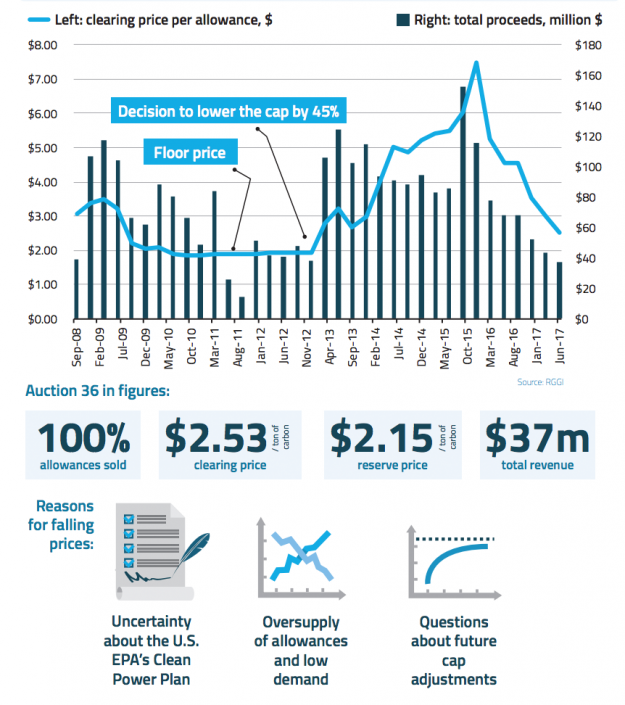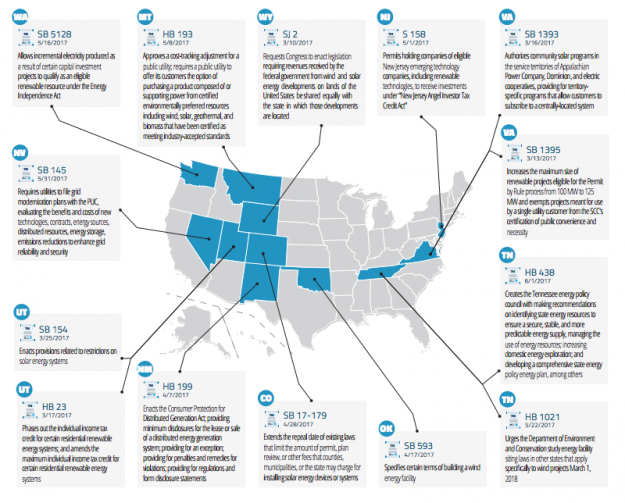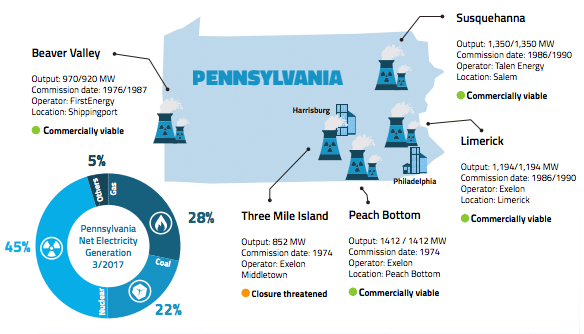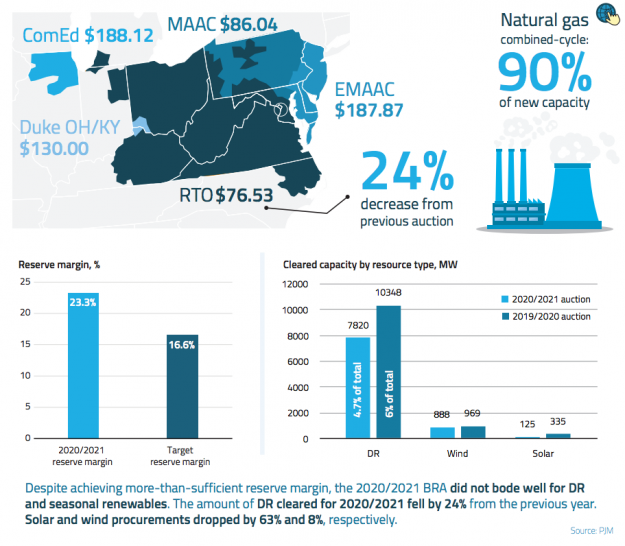Carbon Prices in RGGI Auction Slump to Lowest in Over Four Years, Reflecting Need for Reform
Clearing prices in the June 2017 RGGI auction dropped to their lowest level in over four years, marking a sharp turn from the December 2015 auction which had reached a record high. The decline in prices can be attributed to uncertainty about the RGGI program after 2020 with regard to the future value of emissions allowances, as well as uncertainty over the future of the Environmental Protection Agency's Clean Power Plan. RGGI’s emission cap must extend at least until 2030 to provide certainty for market participants who are bracing for the end of the program currently slated for the end of 2020.



